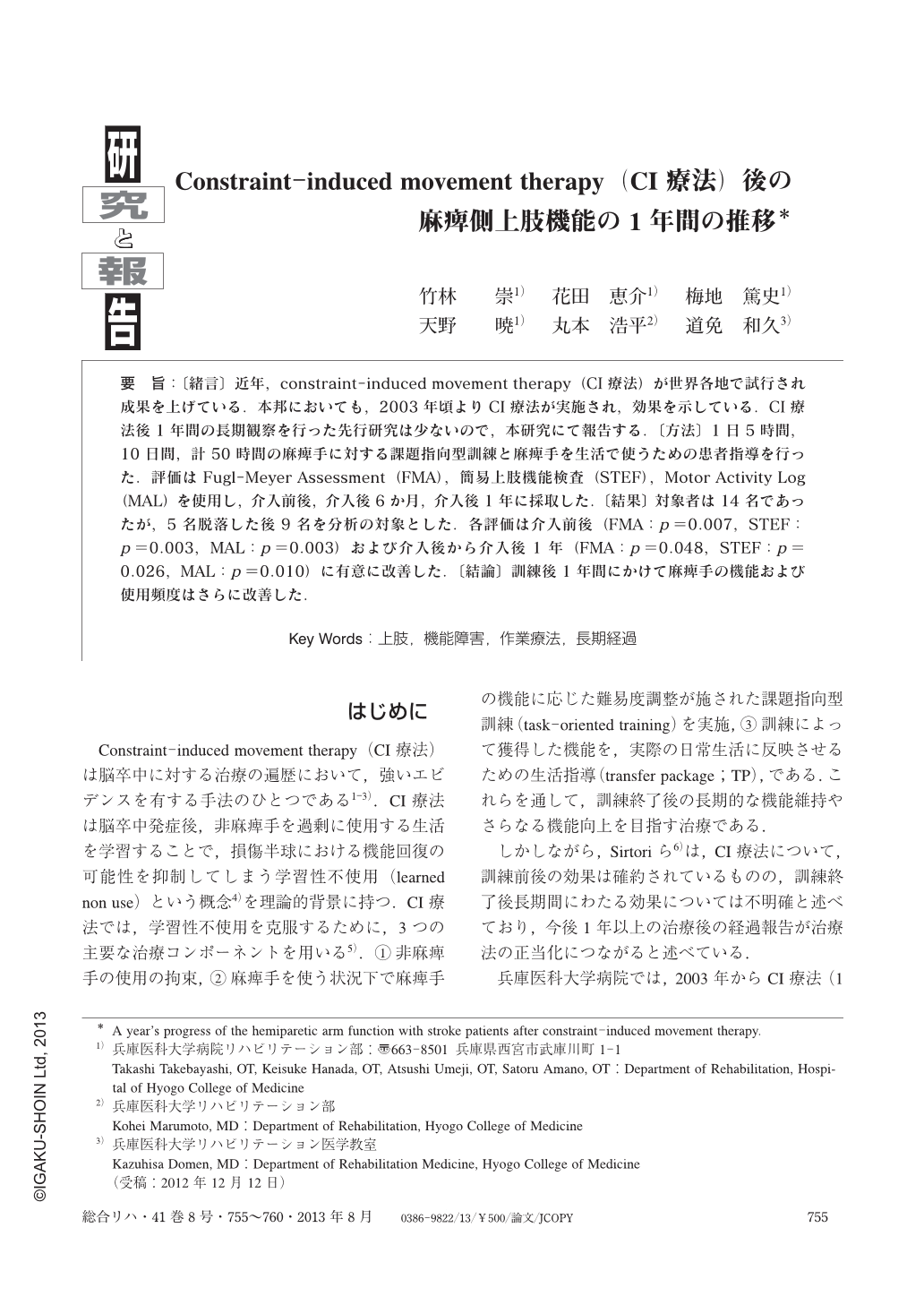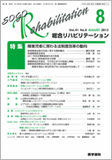Japanese
English
研究と報告
Constraint-induced movement therapy(CI療法)後の麻痺側上肢機能の1年間の推移
A year's progress of the hemiparetic arm function with stroke patients after constraint-induced movement therapy.
竹林 崇
1
,
花田 恵介
1
,
梅地 篤史
1
,
天野 暁
1
,
丸本 浩平
2
,
道免 和久
3
Takashi Takebayashi
1
,
Keisuke Hanada
1
,
Atsushi Umeji
1
,
Satoru Amano
1
,
Kohei Marumoto
2
,
Kazuhisa Domen
3
1兵庫医科大学病院リハビリテーション部
2兵庫医科大学リハビリテーション部
3兵庫医科大学リハビリテーション医学教室
1Department of Rehabilitation, Hospital of Hyogo College of Medicine
2Department of Rehabilitation, Hyogo College of Medicine
3Department of Rehabilitation Medicine, Hyogo College of Medicine
キーワード:
上肢
,
機能障害
,
作業療法
,
長期経過
Keyword:
上肢
,
機能障害
,
作業療法
,
長期経過
pp.755-760
発行日 2013年8月10日
Published Date 2013/8/10
DOI https://doi.org/10.11477/mf.1552110210
- 有料閲覧
- Abstract 文献概要
- 1ページ目 Look Inside
- 参考文献 Reference
要旨:〔緒言〕近年,constraint-induced movement therapy(CI療法)が世界各地で試行され成果を上げている.本邦においても,2003年頃よりCI療法が実施され,効果を示している.CI療法後1年間の長期観察を行った先行研究は少ないので,本研究にて報告する.〔方法〕1日5時間,10日間,計50時間の麻痺手に対する課題指向型訓練と麻痺手を生活で使うための患者指導を行った.評価はFugl-Meyer Assessment(FMA),簡易上肢機能検査(STEF),Motor Activity Log(MAL)を使用し,介入前後,介入後6か月,介入後1年に採取した.〔結果〕対象者は14名であったが,5名脱落した後9名を分析の対象とした.各評価は介入前後(FMA:p=0.007,STEF:p=0.003,MAL:p=0.003)および介入後から介入後1年(FMA:p=0.048,STEF:p=0.026,MAL:p=0.010)に有意に改善した.〔結論〕訓練後1年間にかけて麻痺手の機能および使用頻度はさらに改善した.

Copyright © 2013, Igaku-Shoin Ltd. All rights reserved.


